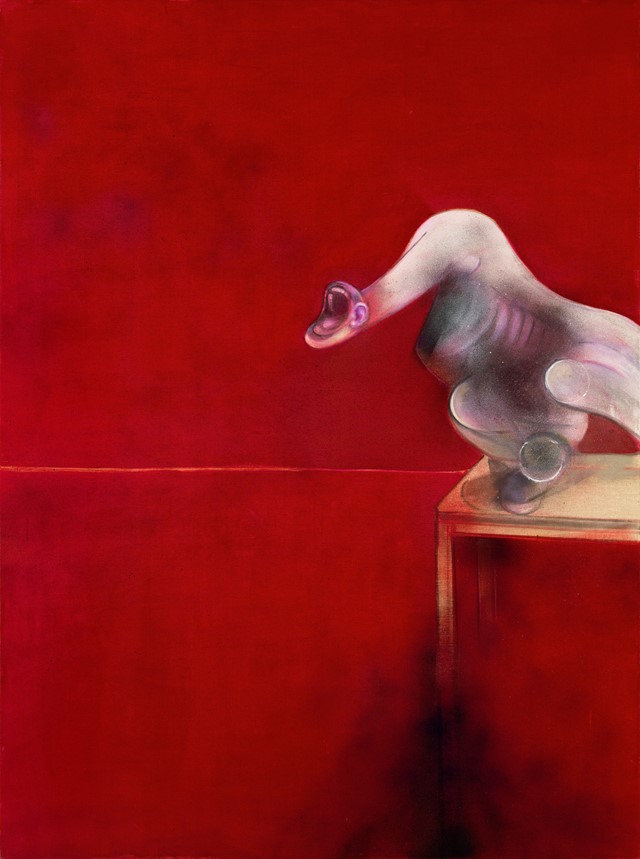Throughout the work of Francis Bacon, the veil separating our civilised human behaviour and our latent animalism frequently disintegrate, revealing a ghastly, feral vision of humanity as twisted meat and silent screams. His paintings, known for their animal intensity, are suffused with his surreal iconography of pain, sex, and bodily horror. A new exhibition at the Royal Academy, Francis Bacon: Man and Beast traces the thread of this recurring interest in the slippage between humans and wildlife.
Bacon was always fascinated by animals. He spent his childhood among horses and hunting dogs in Ireland, where he was raised by a sadistic father who forced him to endure arduously long, asthma-inducing hunting excursions and frequently ordered the stable boys and grooms to whip his sickly, small son. Later, young Bacon would seduce the very stable boys who had beaten him, somehow completing this sequence of abuse by inflicting revenge on his father and forever cementing the connection between shame, punishment, and sexuality that typifies not only many of his paintings, but also the mythologising tales that continue to encircle the late artist’s private life.
The exhibition encompasses Bacon’s entire career, from one of his earliest surviving works, “Crucifixion” (1933), to the last known painting he made in 1961 (here on public display for the first time in the UK). There’s a profusion of reds and browns, and a nightmarishly uncanny sense of recognisable objects and limbs dissolving into configurations of organs, jaws full of sharp incisors, Simion features, and strange polyp-like growths.
“Head VI” (1949) depicts a claustrophobic, noiseless scream in which his subject appears to be locked in an airless vacuum… perhaps a hellish vision of the chronic asthma that dogged Bacon throughout his life. Elsewhere, human bodies are reduced to their naked, vulnerable animal-selves. “Portrait of George Dyer Crouching” (1966) depicts Bacon’s former-lover as a minotaur-like creature-man, either cowering or about to pounce.
Take a look at the gallery above for some of Francis Bacon‘s epoch-defining works featured in this compelling exhibition.
Francis Bacon: Man and Beast is running from January 29 – April 17 2022 at the Royal Academy, London
